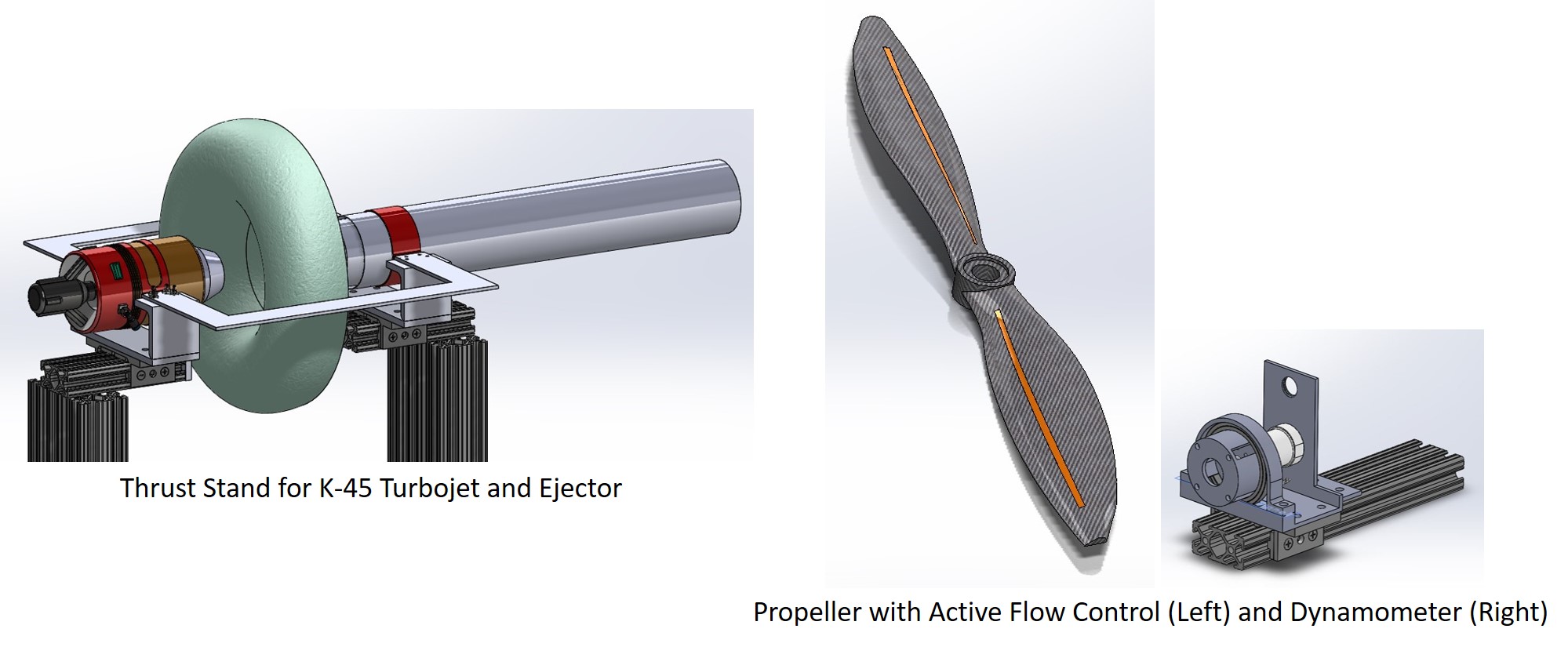Propulsion Flexible-Use Wind Tunnel
Determining innovative methods for improving quiet unmanned aerial system engine performance for increased range and endurance, as well as versatility.
Quiet unmanned aerial systems are constrained by poor range and endurance due to low energy density intrinsically associated with electric motors and due to low compression ratios inherent to small internal combustion and gas turbine engines. Thus, there is a critical need to compensate for these limitations by developing innovative methods to improve engine performance with low noise emissions. The long-term goal of our research group is to determine effective means to minimize engine performance losses and noise emissions and to ascertain methods for enhancing engine versatility to meet emerging propulsion and power needs.
The Flexible-Use Wind Tunnel in the Advanced Technology Research Center facilitates development of various propulsion technologies, including fan and propeller blade and hub geometries, as well as passive and active flow control methods to reduce performance losses and noise emissions. This Eiffel open-loop wind tunnel has a 1:16 contraction ratio and is driven by a 125-hp centrifugal fan, enabling velocities up to 120 mph in the modular 3-foot by 3-foot test section. Propeller dynamometer, gas turbine engine and piston engine test stands specially designed for this facilty allow for a variety of test arrangements, including experiments with propellers up to 18 inches in diameter.


